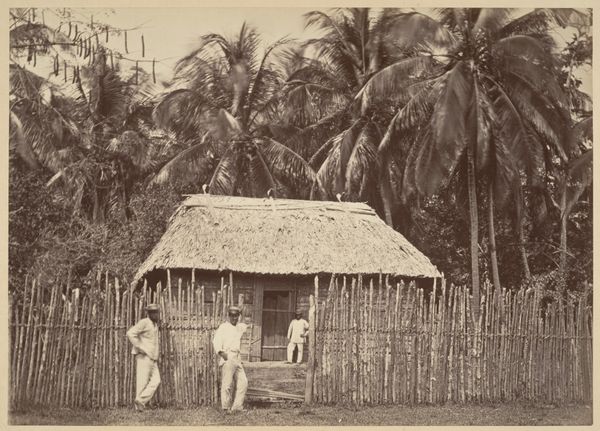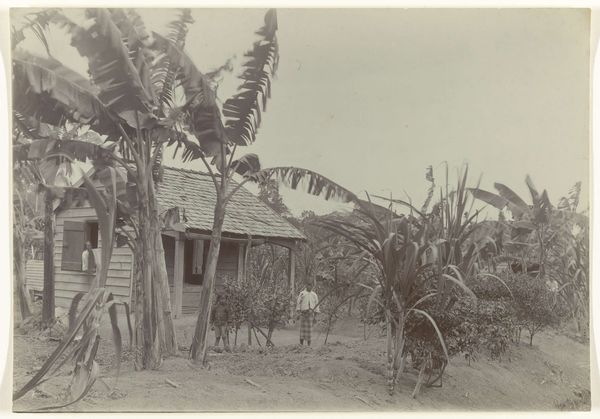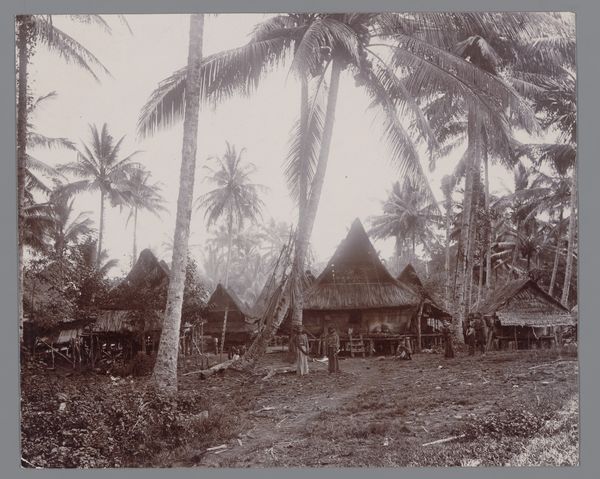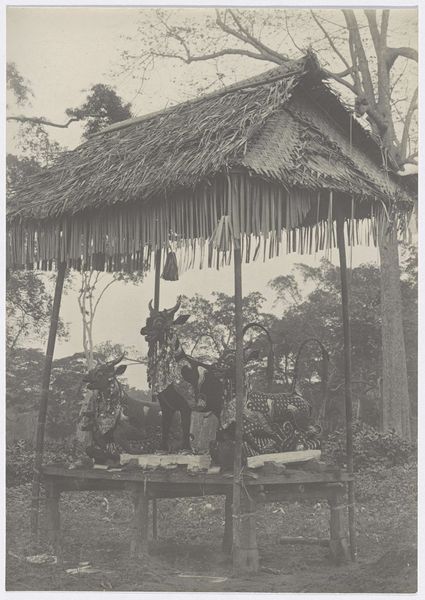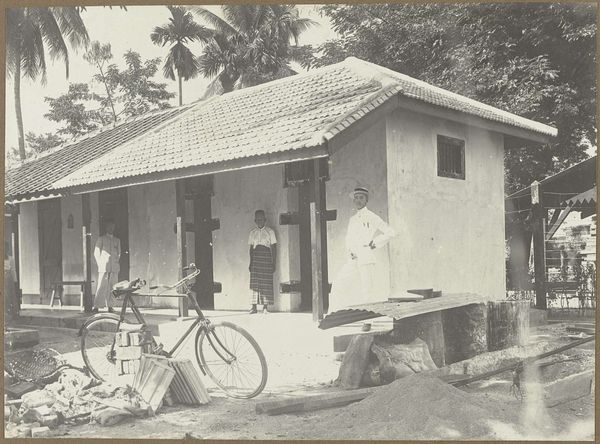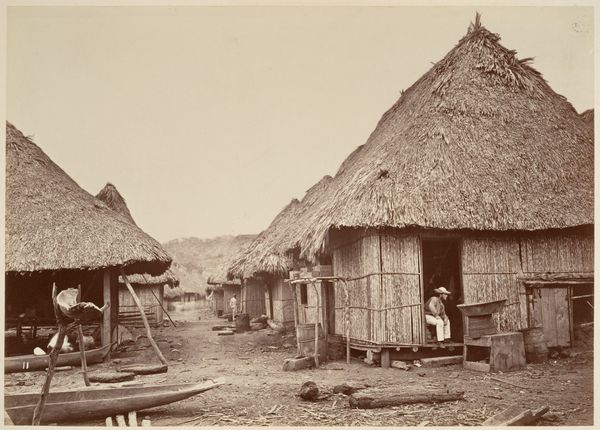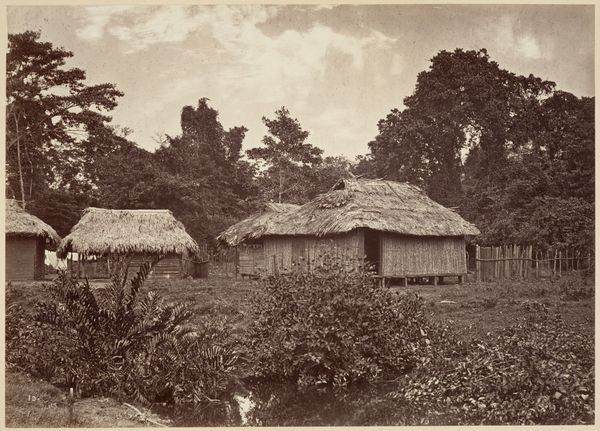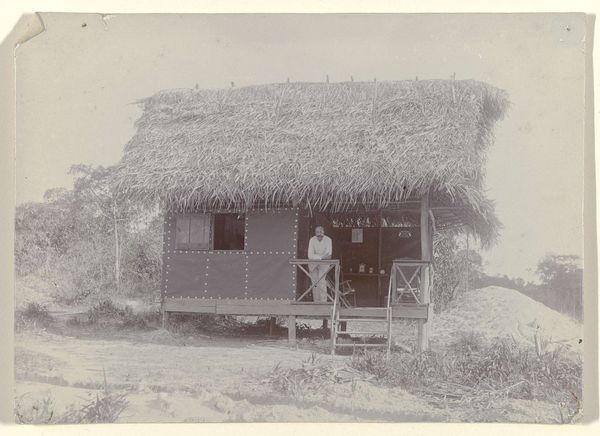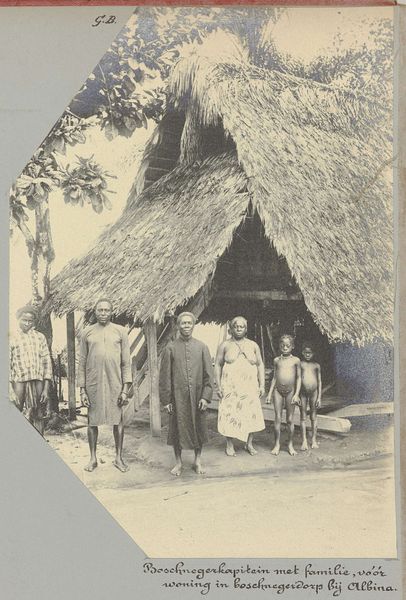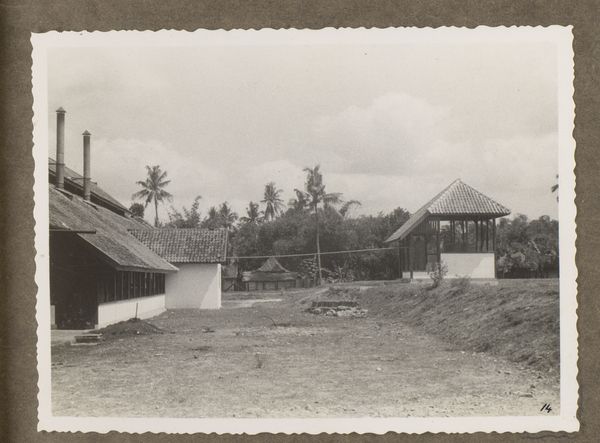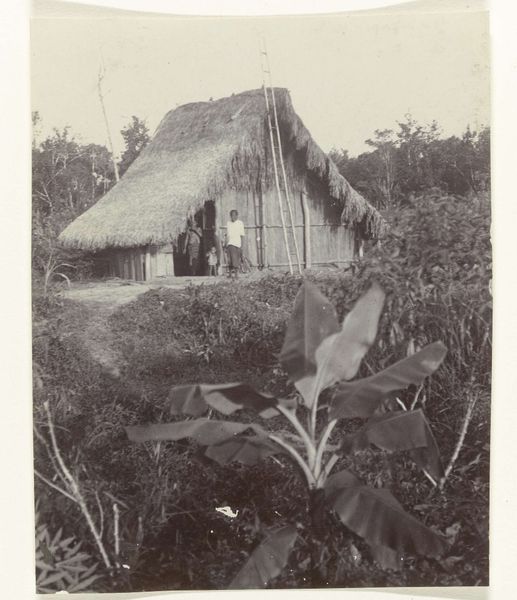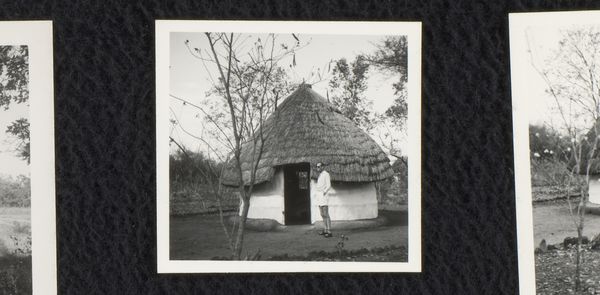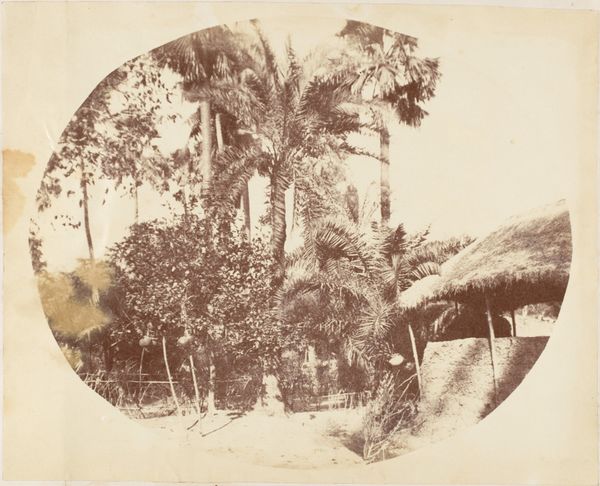
photography
#
portrait
#
african-art
#
landscape
#
photography
#
genre-painting
#
natural palette
#
mixed media
#
realism
Copyright: Rijks Museum: Open Domain
Curator: This photograph, entitled "Gezin poserend voor huis, in het Caraïbisch gebied," or "Family posing in front of house, in the Caribbean," was taken between 1896 and 1901 by an anonymous photographer. It resides here at the Rijksmuseum. Editor: The immediate impression is striking – it’s so raw and yet posed. I love the textures. That thatched roof, the roughly plastered walls – you can almost feel the humidity radiating from it. And a snoozing dog just completes this tableau of daily life, though the people look less comfortable! Curator: Indeed. This image offers us a glimpse into life during the late 19th century in the Caribbean. These genre scenes provide insight into domestic and familial arrangements. We have a nuclear family; parents sitting, one resting, the other with the kids - who are standing attentively for the photographer. Note how the house is constructed and surrounded by flourishing plant life. Editor: It makes you wonder about the power dynamic at play, though, doesn't it? Here's an anonymous figure capturing the life of a family within the colonial framework, turning people into subjects for documentation. Does the gaze change the nature of things? Did the photograph serve its function, which in the time period it was shot was for entertainment and anthropological records, with an alleged scientific aim to describe people of other nations, or could it still let its subject's humanity come through. Curator: It is critical to acknowledge the historical context. The very act of taking a photograph was charged. The colonial gaze played a large role in how communities of color were documented. However, pictures can reveal important knowledge. This photo could allow viewers to consider what a family unit looks like across space and time, particularly, given that its subjects are from an underrepresented community. Editor: Absolutely. There's a stillness to it, a quiet dignity despite everything. It’s like a time capsule holding both vulnerability and resilience, wrapped up in a beautiful photograph. Curator: Well said. I appreciate how you were able to recognize some subtle nuances. Hopefully, our listeners also see the different elements, in addition to the picture’s role in publicizing ethnographic work of underrepresented people. Editor: Ultimately, art invites introspection. It may give us pleasure; perhaps it helps us discover parts of ourselves, or it may just encourage critical discussion!
Comments
No comments
Be the first to comment and join the conversation on the ultimate creative platform.

